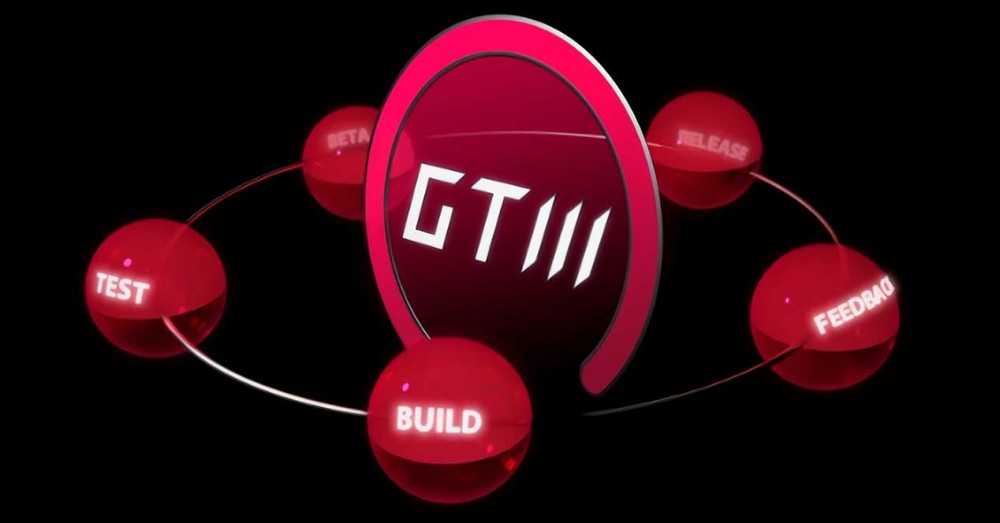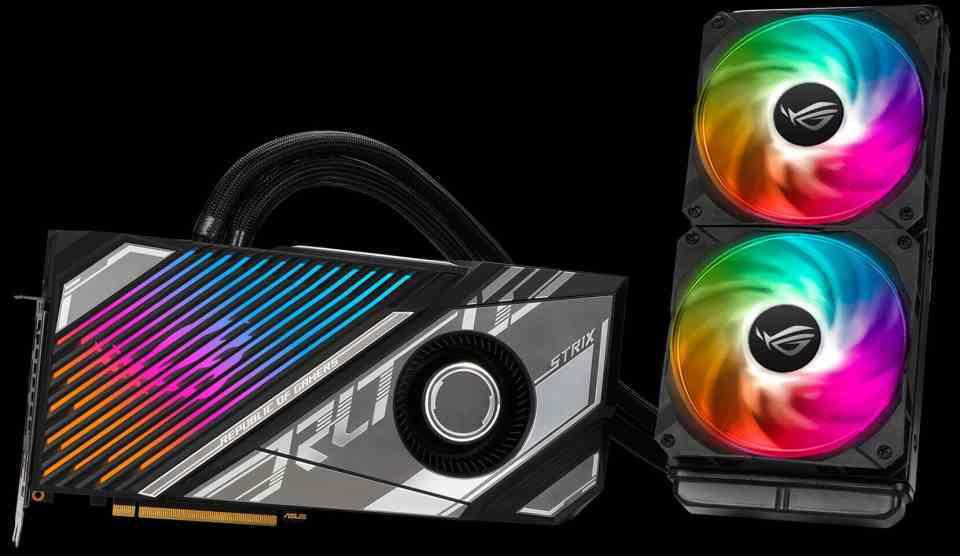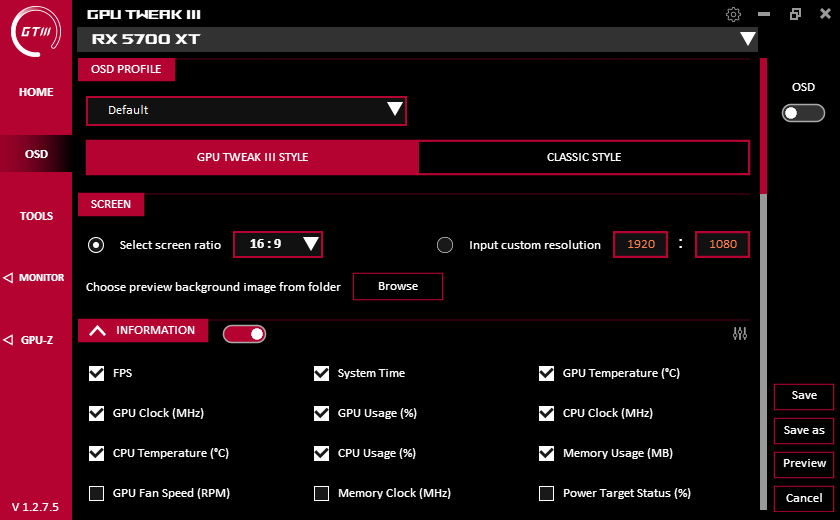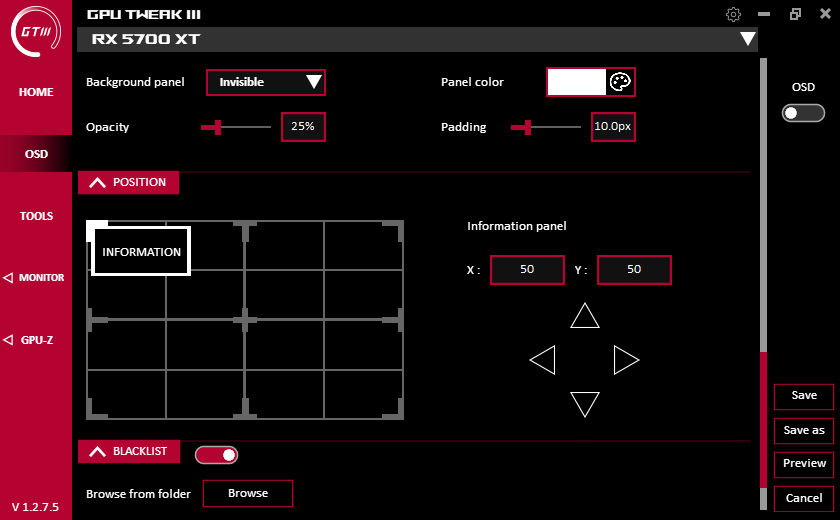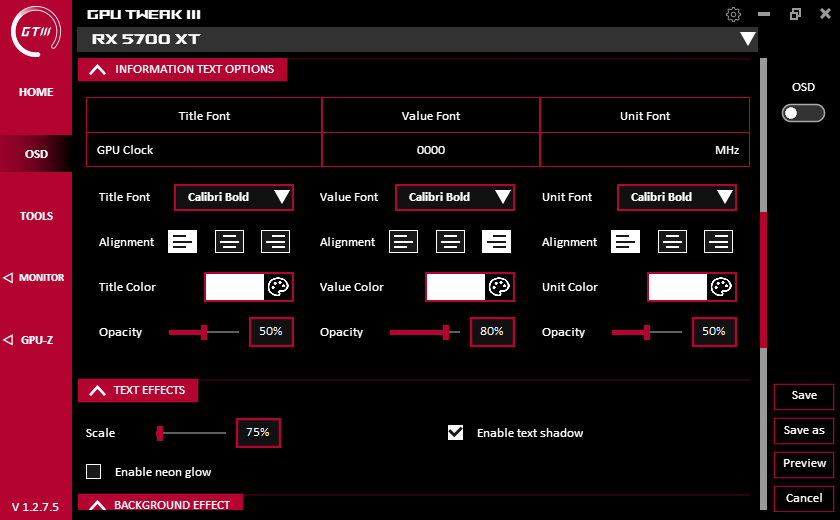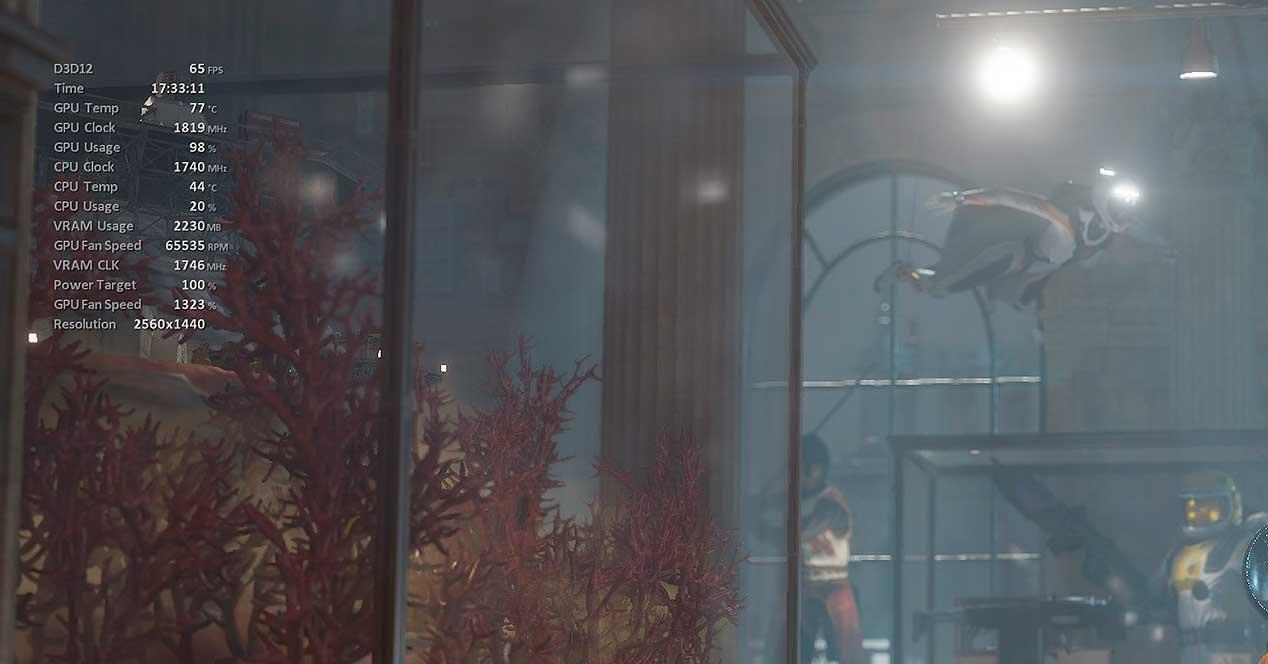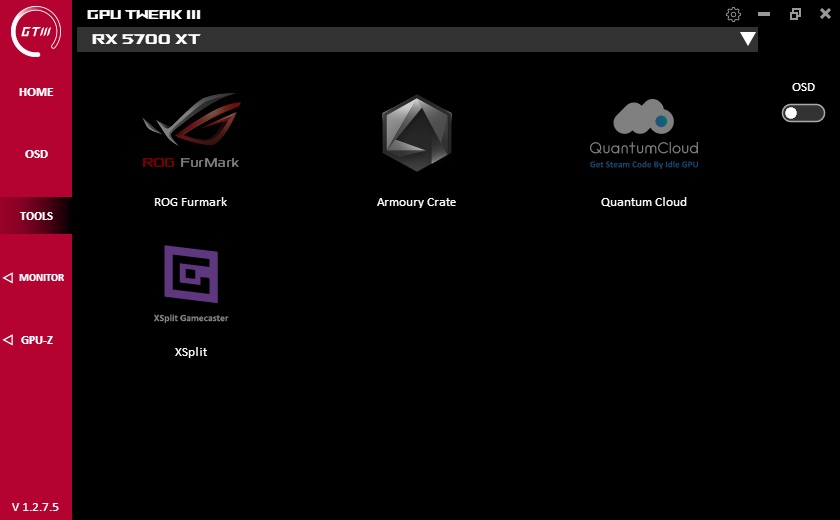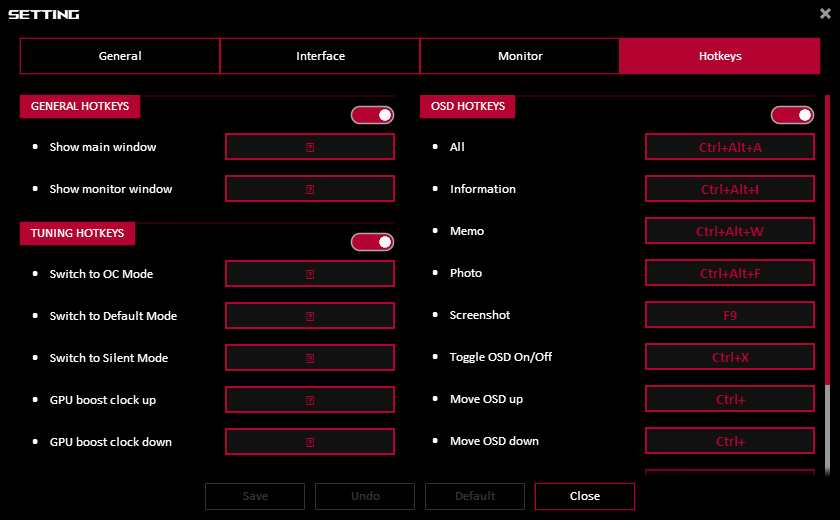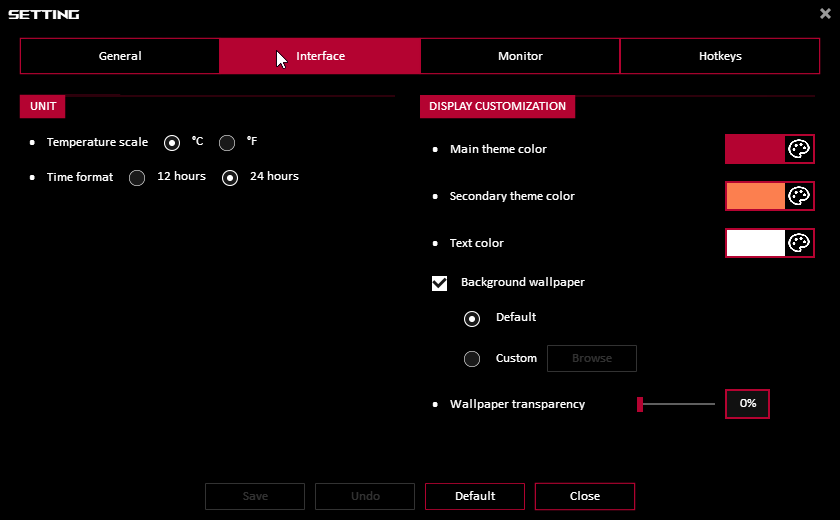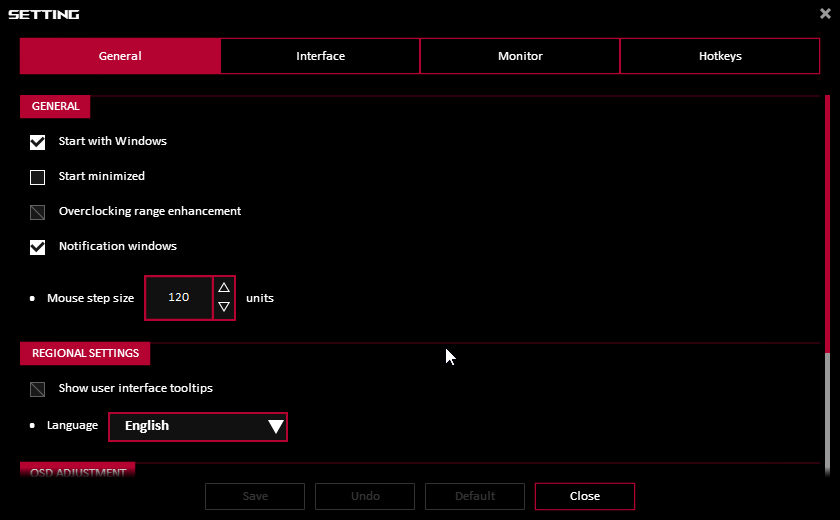Что asus gpu tweak
ASUS GPU Tweak что это за программа и нужна ли она?

Кстати есть еще вторая версия проги, она так и называется ASUS GPU Tweak II. Значит в существовании такой проги нет ничего удивительного, я прекрасно помню когда мне купили комп, это было тучу лет назад, но даже тогда уже в комплекте с компом, а если быть точнее то с материнкой, шел диск с драйверами и какими-то прогами.. Еще помню одно и наверно запомню на всю жизнь, это дизайн, он был просто странным: проги были цветными и как будто игрушечными. Так вот для материнки шла прога с похожим функционалом, она позволяла разгонять процессор, поднимать там вроде частоту FSB или чего, я толком не помню… Короче подобные проги есть и для материнок и для видеокарт, это все так называемый фирменный софт
Вы только посмотрите как выглядит данная программа:
Как видите здесь идут какие-то виртуальные измерительные приборы типа. Как я понимаю, то здесь показано использование видеопамяти, скорость видеопроцессора и температура видеочипа. Вообще видеочип в компе именуется как GPU, ну это просто вам на заметку.
Также я накопал инфу о том, что в проге реализованы четыре режима:
Также при помощи программы ASUS GPU Tweak вы можете записывать видео игрового процесса.
По поводу режима My Profile. Значит все верно, режим для кулхацкеров, ибо тут можно настроить такое как напряжение, настроить VRM, эта тема для опытных юзеров, а вот окно настройки:
Ну и дела. О чем это я? Да вот о том, что вместе с этой прогой у вас также может быть и еще одна не менее крутая прога, это Gaming Booster:
Она поможет в компе навести мини-марафет. Короче уберет лишние процессы и распределит ресурсы компа. Ну прога-хозяйка, что еще сказать 
С одной стороны кажется, фух, ну дела, проги крутые спору нет. А вот с другой стороны удивляться нечему. Современные мощные видеокарты стоят или дороговато или ну очень дорого. Видеокарта сегодня это не просто устройство, это сердце игрового компьютера… С процессором проще, берете топовую модель и современный сокет и делов. А вот видеокарта, тут куда больше нюансов…
Это мы с вами поговорили о ASUS GPU Tweak версия II, тогда получается что вот как выглядела первая версия этой проги:
То есть тут выше на картинке также показаны вроде настройки разгона.. Ну а это тюнинг памяти, так бы сказать тонкая настройка:
Тут нужно настраивать осторожно, если вы не знаете что такое тайминги, напряжение памяти, то лучше тут ничего не трогать!
Ну что, можно сделать итог всего вышесказанного:
На этом все. Хорошего настроения и удачи вам
GPU TWEAK III
ASUS GPU Tweak enables complete control over 3D graphics performance and monitoring. New features and UI designs from our enthusiastic community are continually added through frequent updates. The result is an extremely intuitive and capable utility.
LATEST BLOG POST
FRESH DESIGN, RETUNED PROCESS
For the past two years, we have been working closely with enthusiasts from all walks of the industry to define the next chapter in the GPU Tweak saga. That collective feedback has been carefully packaged into every layer of GPU Tweak III. At the forefront of the revamp, there’s a completely overhauled UI, automated profile loading for games and apps, and new ways to track vital metrics and stats. To bring GPU Tweak’s aging feature set and UI into the modern era, we felt we had to start from the ground up. This would allow us to create a more flexible foundation on which we could build up.
READ MORE
FEATURES
OVERCLOCKING
Boosting GPU performance past default specifications is, of course, a critical function for a graphics card utility. GPU Tweak III is designed to simultaneously cater to users seeking an automated overclocking experience, and to enthusiasts who want full manual controls. Built-in performance profiles and OC Scanner for NVIDIA GPUs provide the plug-and-play experience, while dedicated sliders for clock offsets, wattage, thermal thresholds, and frame rate limits put full control at the fingertips of experienced tweakers.
FAN CONTROLS
GPU fans, as well as any system fans connected to FanConnect headers, can be fully customized with options for static RPM settings and user-defined curves. New for GPU Tweak III are hysteresis and update period options to adjust how quickly fans respond to temperature changes. All of these settings can be saved to profiles alongside preferred voltage and clock settings.
PROFILE CONNECT
The Profile Connect feature allows the user to link any program to both a tuned and an OSD profile, so that when the app opens, GPU Tweak swaps settings automatically. This feature is especially handy for users that want to optimize performance and fan speeds for a wide variety of software. Distinct overclocking and fan speed profiles can be created for specific games and applications and then GPU Tweak seamlessly handles the rest.
HARDWARE MONITOR
Performance tracking is a core focus in this iteration, so we added system power and fan RPM hooks to the already robust stat tracker. The entire monitor interface is also now detachable, scalable, and arrangeable into either a numerical line view or a grid-based graph format. It’s topped off with the ability to export monitoring sessions as logs which can be imported for later analysis.
ON-SCREEN DISPLAY
The GPU Tweak III OSD includes a host of new features, such as the ability to tweak fonts, colors, transparency levels, frosted panels, and even neon glow. The position and size can be scaled as necessary, and since users can now attach OSD profiles to games through Profile Connect, we have added a Preview mode, so that saved screenshots can be used to check how OSD adjustments will appear in-game.
An in-depth hardware profile of the installed graphics card can be displayed in the built-in TechPowerUp GPU-Z panel. See GPU specs, default and boost clock thresholds, driver info, computing technologies, and more.
ROG FURMARK
FurMark ROG Edition is a heavily revamped version of the popular FurMark tool. It features modern stress-tests and artifact scanners based on OpenGL and Vulkan. Use it to test GPU stability and thermal performance.
GAMECASTER
XSplit Gamecaster gets you set up for lag-free streaming and recording in seconds. Built for gamers by gamers, Gamecaster lets you jump right into content creation with its automatic stream optimizer and huge library of overlays.
ARMOURY CRATE
Armoury Crate lets you easily customize lighting and effects for your graphics card and other ASUS products through an intuitive interface for unified RGB controls. Sync your lighting to music, in-game action, or CPU/GPU temperatures, or go all-out with detailed, multi-layered effects made possible through Aura Creator.
QuantumCloud
QuantumCloud is a simple and secure service that lets you effortlessly earn extra money by putting your idle GPU to work. Earnings are automatically transferred to your WeChat or PayPal account, and your privacy remains intact because QuantumCloud doesn’t collect your personal data.
DOWNLOAD GPU TWEAK III
STABLE VERSIONS
BETA VERSIONS
GPU Tweak III is still in beta while we implement new features.
We encourage you to try out the beta version, but if you want the
classic GPU Tweak experience, feel free to download GPU Tweak II.
Latest Version v.1.3.5.7
GPU Tweak III is now Windows 11 ready! Along with optimizing for Microsoft’s newest platform, this update changes how profiles are saved, so that each profile can have a distinct VF and fan curve. Those changes come with some fixes to issues in the behaviors of the Apply and Save actions.
Platform Support:
This version has been verified and optimized for use on both Windows 10 and Windows 11.
Profile Changes:
Quality of Life Improvements:
Feature Fixes:
Display Fixes:
v.1.3.1.1
We completely overhauled our VF Tuner, making this our biggest update yet! We also made a lot of polish tweaks across the software, particularly to fans, 0dB Mode, and our OSD.
Thanks to tons of user feedback, the VF Tuner has been overhauled, with two main goals: now multiple points can be adjusted at once, and users can adjust points with keyboard commands. Some of the most important changes are below.
0dB Mode Changes:
Generally, 0dB Mode functions as it used to, with some bug fixes. However, the visual behavior of the mode has been changed to clarify when 0dB Mode is being applied.
OSD Changes:
Other Changes:
v.1.2.7.5
Fan controls, OSD support, and quality of life improvements were our focus for this update, and we managed to fix a ton of community-requested bugs on the way! See the patch notes here for more info.
OSD changes:
Other changes:
Known Issues v.1.2.7.5
v.1.2.4.1
This big update fixes several critical issues that have been sent to us by our community as well as adds a bunch of quality-of-life changes to nearly every part of the software. Thanks to everyone who sent us feedback! Check the patch notes for details.
Installation and uninstallation changes:
Interface changes:
Known Issues v.1.2.4.1
Core function issues:
Interface issues:
Other issues:
v. 1.2.1.1
This is our first open beta release for GPU Tweak III! The entire interface has been redesigned, a new OSD style has been added, and this is the beginning of our Profile Connect function. See all the changes between GPU Tweak II and III here.
Interface Changes:
The new Home Screen combines the elements of the GPU Tweak II Simple and Advanced modes. The one-click Default, OC, Silent, and User Mode presets of Simple Mode appear on the top, and the overclocking sliders of Advanced Mode are at the bottom.
A new Dashboard of several meters is between the presets and sliders. In GPU Tweak II, three meters appeared on the Simple Mode to show GPU frequency, memory frequency, and GPU temperature. GPU Tweak III includes several new meters, such as GPU Power, GPU Voltage, and meters for each controllable fan setting. A slider button allows users to either show all of them, or to hide them. These meters can be disabled and rearranged through a settings menu on the top-right of the Dashboard.
Both the main screen and the Monitor are scalable by dragging the sides or corners of the interface, so users can reshape it to fit their desktop space. When closed and reopened, the interface returns to the center of the main screen, but any size changes remain intact.
The main colors of the interface can be adjusted through the Settings > Interface screen. The color of the Monitor display can also be adjusted through the Settings > Monitor screen, and each graphics card in the system can be assigned a different color. A background wallpaper may also be added, but that function is still a work-in-progress.
Most elements of the UI appear as separate panels. Separate panels appear for the main/Home screen, the Monitor, Settings, OC Scanner, and GPU-Z. Each of these can be moved and closed independently.
The logo at the top-left changes based on the graphics card used. If the graphics card is from an ROG, TUF Gaming, or ASUS line, the respective logo will be shown. If the graphics card is non-ASUS, the GPU Tweak III logo will be shown. A future update will allow users to change that logo if desired.
Profile Changes:
The preset Default, OC, and Silent Modes are treated as profiles and can be connected to games and apps.
Fan settings are now saved as part of tuning profiles, so different fan curves and overclocking settings can be saved in the preset Default, OC, and Silent Modes.
Multiple OSD profiles can be saved, each with different settings tailored for particular games or apps. The Default OSD profile is initially set to the Classic Style as designed for GPU Tweak II, but can be changed to the GPU Tweak III style if preferred.
Settings for multiple graphics cards are saved into a combined profile that maintains all changes made.
Profiles can be exported and imported, so that they can be moved to other systems or preserved through a Windows reinstall. Imported tuning profiles must match one or more graphics cards that are currently installed in the PC, or the import will be unsuccessful.
On-Screen Display (OSD) Changes:
A completely new On-Screen Display (OSD) style has been added. The GPU Tweak III Style allows users to rearrange the information items, resize and realign columns in the display, and make them bold.
Text size and color can now be adjusted in both the GPU Tweak III Style and Classic Style.
Effects can be added to the OSD text and background. Text can now drop shadows behind it or have a slight glow. The background can be filled in by a panel with adjustable color or opacity to make it pop out against UI elements with minimal impact to in-game visibility.
A «Preview» button has been added to the OSD screen that allows users to see the OSD without opening another program. An option in the «Screen» subsection allows users to upload their own image to the Preview. This can be used to set a game screenshot into the UI and adjust the OSD around the UI elements.
Monitor Changes:
The Monitor now includes two views. The Line View is similar to the previous GPU Tweak II display, but the graphs can be widened for detailed examination by stretching the Monitor window. The Column View compresses the graphs into squares, and the number of graphs shown in each row adjusts to the width of the Monitor screen.
Monitor file size, log frequency, and session length can all be adjusted in the settings screen.
Monitoring graph snapshots can be saved and viewed later through use of the Export and Import Logs functions. This may be useful for comparing performance to a previous tuning session. Note that this function is still a work-in-progress and will be visually enhanced in the future.
When linked, the Monitor and main screen «Close» and «Minimize» buttons act on both parts, and any interactions with their icons in the tray affect both parts.
Other Changes:
Fan controls now include two new settings: fan speed update period, and temperature hysteresis. These can also be applied to external fans.
Additional settings allow users to adjust temperature scale (°C and °F), as well as time scale (12 hour and 24 hour).
«Gaming Mode» has been renamed to «Default Mode». The functionality is the same.
Screenshots can now be taken in JPG format in addition to PNG format which was supported in GPU Tweak II. Users can choose their preferred format in Settings > Monitor.
Removed Functions:
Some functions that existed in GPU Tweak II have been removed in GPU Tweak III, and they are listed here, along with our reason for removing them.
Always 3D Clock: Modern GPU APIs no longer allow external control of this function, so the feature is no longer supported.
Gaming Booster: The three sub-functions in Gaming Booster each had their own reasons for being phased out. Visual Effects were removed because modern games manipulate visual effects in-game to improve graphical performance, rather than at a system level. System Services were removed because Windows 10 updates have made service management far more efficient than before. Disabling services already has a chance of causing instability, and the performance uplift is usually small. System Memory Defragmentation was removed because solid-state drives have risen in popularity and it is not recommended to defrag SSDs.
Lock toggles next to tuning sliders: Misclicks on these locks led to user confusion over inability to adjust sliders.
Link between Power Target and GPU Temp Target: This was removed because the layout of the UI changed to distance these two items.
Live Update: This function is being reworked and will be included in a later version.
Monitor Startup Options: The Monitor and main screen have been reworked to behave as if they are one unit in most situations. Current settings affect both parts together.
User Interface Tooltips: These are being rewritten for the new functionality and a full set will be released in a later version.
Known Issues:
The Nvidia GeForce Experience overlay and the GPU Tweak III OSD conflict with each other and can prevent games from running when both are enabled. It is recommended to only run either the GeForce Experience overlay or the GPU Tweak III OSD.
The CPU Usage field in the OSD may show incorrect values.
When multiple programs are in the same place, the layering of different GPU Tweak III windows (main screen, Monitor, Settings, and OC Scanner) may be inconsistent, so some elements may fall behind other programs while others are in front.
Frame Rate Limit requires any running games or programs to be restarted before taking effect. Currently this function only extends to 255 FPS.
OSD fonts in GPU Tweak III style only allow for Calibri and Calibri Bold adjustment. Full font adjustment will be added in a later release.
GPU-Z clock values do not update in real time. To update the clock values, close and reopen GPU-Z.
Mouse step size controls have not been implemented yet.
Not all hotkeys are completely implemented at the moment. Notably, the Timer is visible but not working.
Screenshots will always be saved to the default folder, not personally selected folders.
The Default display wallpaper is just a blank black background.
Wallpaper transparency has not been implemented yet.
Fahrenheit temperature settings only affect the Monitor, not the other parts of the interface.
Some interactions with the OSD may cause an error to appear referring to «mFinitialize Fail». This error does not affect operation.
Game and application file names are not sorted properly in the Profile Connect window.
ASUS GPU Tweak III: загрузка, установка и возможности
Увеличение потребления видеокарт и ничтожность инноваций в системах рассеивания энергии заставляет все больше и больше пользователей требовать более полного программного обеспечения для управления и мониторинга, более простого в использовании и потребляющего меньше ресурсов ПК. ASUS внимательно выслушал и теперь имеет третью версию своего флагманского программного обеспечения для этих целей, но что делает ASUS? GPU / ГРАФИЧЕСКИЙ ПРОЦЕССОР Tweak III по сравнению с остальными?
В это время необходимо программное обеспечение для мониторинга графического процессора, не зря значения, такие как температура, потребление или частота вращения вентиляторов, могут идти рука об руку. По этой причине и для того, чтобы соревноваться с лучшими, ASUS модернизировала свое флагманское программное обеспечение и теперь предлагает больше функций, чем когда-либо.
ASUS GPU Tweak III, лучшее программное обеспечение для видеокарты?
У ASUS было несколько лет, когда она не могла конкурировать с другим более мощным программным обеспечением, таким как EVGA Precision или MSI Afterburner, но, похоже, компания поняла, что программное обеспечение так же важно, как и оборудование. Имея это в виду, он разработал новую программу, которая сохраняет сущность своей предшественницы, но оставляет после себя ряд довольно интересных новых функций.
Эксклюзивный веб-интерфейс для ASUS GPU Tweak III
Хотя реальность такова, что на момент написания этой статьи компания ASUS опубликовала свой GPU Tweak III только в качестве бета-версии, из того, что мы проверили, можно сказать, что он действительно стабилен. Поэтому в области загрузки вашего веб-сайта мы пока не найдем стабильных версий, а только одну бета-версию под названием 1.2.1.1.
Вы можете скачать эту версию, перейдя по следующей ссылке:
Новый графический интерфейс
Несмотря на то, что с правой стороны у нас находится кнопка OSD, в самой программе есть раздел для ее настройки по своему вкусу. Эти параметры будут определять мониторинг на экране, когда мы играем, поэтому важно потратить время на определение размеров, шрифтов, положения и значений, которые мы хотим видеть в игре в реальном времени.
Параметры положения и непрозрачности поразительны, не говоря уже о заполнении, все они очень полны и отражают, что настройка чрезвычайно высока.
Результат со всем включенным и по нашему вкусу отражается вот так: просто для чтения, полупрозрачный, с белыми буквами и все хорошо организовано, но, как мы говорим, его можно полностью настроить.
Утилиты в GPU Tweak III
ASUS дает нам возможность загрузить несколько своих программных утилит, чтобы завершить предложение, которое она предлагает с Tweak III. Мы можем бесплатно загрузить ваше программное обеспечение Furmark для работы с графическим процессором в версии ROG, компонент Armory Crate и программное обеспечение для управления освещением, ваш Quantum облако или система управления облаком XSplit для потоковой передачи в реальном времени.
Хотя может показаться, что это не так, программа позволит нам более полный контроль в самой панели OSD, но для этого нам нужно будет перейти в меню монитора, а затем у нас будет вторая боковая вкладка, прикрепленная к той, которую мы работа над.
Эту вкладку можно отсоединить от первой и исходной, щелкнув значок, который объединяет их в виде цепочки. На этой новой вкладке мы увидим именно все параметры графического процессора в реальном времени. Новинка заключается в том, что ASUS не только показывает текущее значение каждую секунду, но и позволяет отображать максимальное и минимальное значение каждого из них.
Мы можем экспортировать журналы и импортировать их, и, прежде всего, отображать информацию в гораздо более графическом виде. В левом верхнем углу той же вкладки со значениями есть два варианта: линейный и столбцовый. Обычно мы находимся в линейном представлении, но если мы нажмем на представление столбца, то у нас будет та же информация, которая отображается в независимых графиках, что позволяет нам видеть эволюцию каждого значения во временном диапазоне, который не может быть изменен.
Последней настройкой ASUS Tweak III является GPU-Z, программа, которая обычно поставляется отдельно и должна быть загружена, и которую мы будем использовать здесь как утилиту в самом программном обеспечении ASUS. Кроме того, он полностью персонализирован по той же теме, поэтому более чем интересно получить все характеристики карты одним щелчком мыши.
Это правда, что он не такой полный, как оригинальный GPU-Z из-за отсутствия опций, которые он включает, но это облегченная версия, которую всегда хорошо иметь под рукой для проверки любого параметра нашего графического процессора.
Чтобы завершить настройки этого программного обеспечения, нам нужно будет перейти к кнопке, которая находится в правой верхней части, рядом с кнопкой свертывания и имеет форму шестеренки. В нем у нас будет четыре доступных варианта, как показано на следующих изображениях:
На этих вкладках есть такие интересные параметры, как расширенный диапазон разгона для графических процессоров, которые позволяют это, тот факт, что программа запускается, когда Windows загружается полностью автоматически, чтобы иметь возможность настроить указанное программное обеспечение по своему вкусу с точки зрения цветов и текста, даже обоев, определенных параметров мониторинга, таких как журналы и, конечно же, горячие клавиши, чтобы настроить их по своему вкусу и профили запуска, OSD, снимки экрана или даже настраиваем усиление GPU на данный момент.
Как мы видим, новая версия этого программного обеспечения является чрезвычайно мощной и улучшается с каждой версией, поэтому более чем вероятно, что, поскольку ASUS прислушивается к своему сообществу, дополнительные функции будут добавлены в течение нескольких месяцев.









